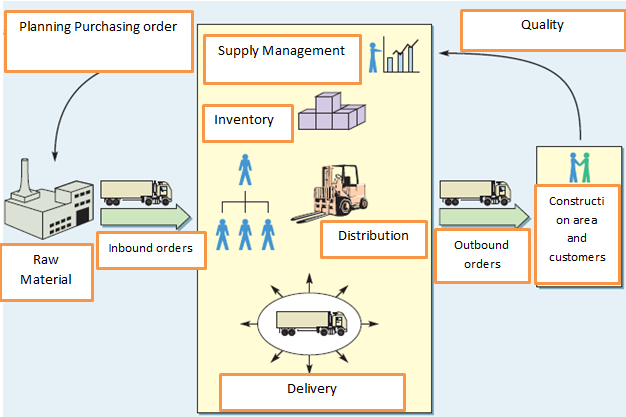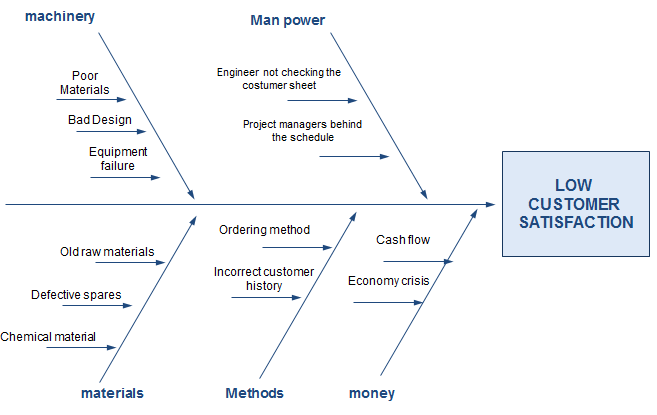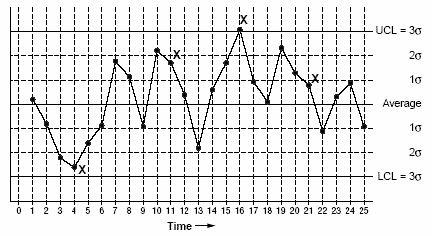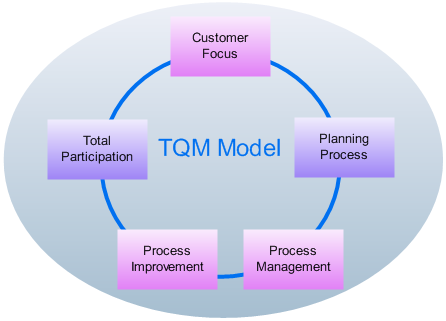Current Operation Management System
Inventory management is one of the most important operation management activities that define the ability of a firm to achieve success in the market. According to Murthy (45), “Inventory can be visualized as stacks of money sitting on forklifts, on shelves, and in trucks and planes while in transit.” Management of inventory involves finding a way of converting these stocks into cash through an effective supply chain management.
The first stage of inventory management is sourcing for the raw materials needed for manufacturing of the products, while the last stage is the process of delivering finished products to the customers in the market. Having an effective value chain management helps in ensuring that the entire process of converting inventory into cash is as efficient as possible.
The decision of arabtc’s management to go global demands for an effective inventory management that will enable it meet the demands of the foreign markers. The management will need to ensure that its operation management system has the capacity to meet the international standards.
It is important at this stage to look at the value chain management used at this firm. The first stage in inventory management is to identify the right raw materials from a reliable source. Arabtec has entrenched its position as one of the leading construction firms in this region. It will need to identify a reliable source of raw materials that will assure it of smooth operations.
When the reliable source of raw materials has been defined, the management will need to define the appropriate way of ensuring that the materials reach the production plant at the right time and in the right manner. Transportation of the inventory can be done by the suppliers as part of their after sale services, or by Arabtec’s own logistics unit. Currently, the firm is using its own facilities to transport the inventories to the production plant.
The next aspect of inventory management is effective storage within the production plant as they wait to be used in the production of various goods that this firm is selling (Krishnaswamy 55). The last stage is to deliver the products to the market for the customers. The entire process is summarised in the diagram below.
Figure 1: Arabtec Construction Inventory Management

This new system has enhanced the capabilities of this firm to penetrate new markets without facing serious challenges. As it is now, this firm has the capacity to implement different strategies in different market areas, which are all aligned to the strategic objectives of the firm. Each of the operational managers at these regions is expected to develop the operational strategies based on the vision of the firm.
Existing Problems and Weakness in the Current Operation Management
According to Chary (96), it is important to identify the problems and weaknesses in the inventory management in order to look for the most appropriate solution. A solution can only be obtained if the weaknesses have been identified. The process of identifying the weaknesses within an organisation needs a critical analytical approach of the existing structures and systems to determine how well they are able to meet the demands of that particular organisation.
These structures and systems should be able to work with the environmental forces without facing any serious challenge that may disrupt the normal operations. The moment any parts of the system or structures are confirmed to be disruptive or unable to manage the external pressure, then that will be considered a weakness.
The main problem that this firm has been facing is its inability to manage the costs of operations in the new market (Schneider 73). Started in 1975, this firm experienced massive success in the 1980s and 1990s within the local markets. However, attempts to move to other regional markets proved very costly because of this weakness. This could be attributed to its management policies that emphasised on using parent country nationals (PCN) instead of host country nationals (HCN) to manage the overseas branches.
This meant that the firm had to conduct extensive research whenever it was planning to enter a new market. This costly venture limited its ability to venture into the Western countries. These countries have lucrative but very competitive markets. The management realised this weakness, and this policy is changing as the firm seeks to find new international markets for its products.
The top management unit has also been struggling to manage the issue of cultural diversity in the international market. Since its inception, this firm has been operating in an Islamic market. The market has its unique characteristics that make it very different from other markets in the international society. Some of the top managers who came from the head office in Dubai to head new branches overseas had difficulties in time adjusting to the social environment.
Sometimes the environment in these new markets posed serious problems that are related to religious beliefs of the managers. For instance, in order to get all the needed documents to start the operations in Russia, the firm had to part will some fee in the form of a bribe to those in the relevant offices (Panneerselvam 76). Some managers who hold dear to their ethical values as defined by their faith may find such acts as one of the biggest challenges in their lives.
The management realised that it is very necessary to use the host country nationals who understand these systems and structures in the new country. Another issue that the management had to deal with is the quality of its products. The market in the international society is very competitive, and clients are keen on choosing the best quality when presented with an array of options.
How to Reorient the Operation Management System
It is clear that the management of Arabtec is doing everything to ensure that it achieves success in the international market. However, the operation management system of this firm can be reoriented using some of the quality models in order to improve the efficiency of the firm not only in the local, but also in the international markets. The researcher recommends the use of Seven Tools of Quality Model to improve the efficiency at this firm.
Cause-and-Effect or Fishbone Diagram
Decision making process is one of the most challenging tasks for the management of Arabtec in the international market. The firm is not familiar with this market. It could be facing the dilemma about the possible consequences of its actions. This problem can be addressed using Ishikawa diagram.
Using this diagram, the management can define every action and determine its possible consequences based on how it is applied. The following diagram identifies some of the decisions or actions that may lead to low customer satisfaction in a firm.
Figure 2: Ishikawa diagram

When using Ishikawa diagram, it is important to note that sometimes a good decision applied in a wrong manner may result into negative consequences. For this reason, it is important for the management to ensure that every strategy is applied using the right models, relevant capital and qualified staff.
Check Sheet
When analysing the quality of the products, Mahadevan (76) says that it is important to find a way of detecting defects and their rate of occurrence within an organisation. Arabtec can use check sheet to identify the rate of defects in its production system. The production unit can then devise mechanisms to help manage these defects as a way of improving the production quality.
The check can also be used to take relevant statistics within the organisation in order to determine how to plan for various activities. The following is an example of statistics that can be taken when handling the communication system within the organisation.
Figure 3: Check Sheet

These statistics can be collected for a desirable period, and an appropriate managerial decision taken over it. This statistics can particularly be important when the management is trying to identify and eliminate time-wasting activities in various departments.
Control Charts
In the international market, the management of Arabtec will need to ensure that the systems it is using are efficient, consistent, and reliable. As Nersesian (31) notes, Control chart will be important in determining if the systems and machines are consistent in delivering quality work.
When using control charts, the management will be able to determine the changes in a given process over time. This will help the firm to know whether the process is systematic and manageable or unpredictable. The figure below shows how the changes in a given process can be recorded over time.
Figure 4: Control chart

Data obtained from this tool can be used by the management of Arabtec in making decision about the reliability of a given equipment or systems in delivering quality services to the firm.
Histogram
According to Kamauff (43), the management unit always has many issues to deal with, but the available time is always limited. In most of the cases, their decision always needs to have a solid data that supports it in order to make informed choices.
Presenting large data to such a management unit may be time consuming, and this may affect the quality of their decisions, especially when they are forced to ignore some data because of the large volume of information presented to them.
Histogram is a quality management tool for the managers when making decisions. The management of Arabtec will find histogram to be very useful in making decisions that require interpreted data. When data is presented in histogram, it becomes easy for the management to have a view of the trend-taking place in a given managerial issue, and the best decision that can be used to encourage or reverse a given trend.
Pareto Chart
Pareto chart will be vital for the management of Arabtec when it comes to prioritizing issues at this firm. The Pareto chart can help the management identify and classify factors that affect the normal operations of the firm. With this information, the firm will know the issues that are of pressing concern, and those that can be addressed at a future data.
The figure below shows how the customer complaints can be classified in order to determine those that need urgent attention of the management.
Figure 5: Pareto chart

As shown in the diagram above, customers have serious issues with the documents and the products’ quality of this firm. These are the most pressing needs that must be addressed immediately.
Scatter Diagram
The management will also find Scatter diagram to be very important, especially at the production plants when trying to identify issues that are affecting the production process. This tool can be very beneficial to the production managers when identifying the causes of the problems and the way they are related to other operational activities within the entire organisation. This makes it easy to fix such problems without necessarily overhauling the entire production system.
Stratification
The top management will need to use stratification when making decision that will affect the overseas branches. When the management of a firm is presented with statistical facts from various departments, it will be necessary to stratify the facts in order to ensure that the decision made will be a reflection of the information from all the departments.
This tool will be very relevant to the management unit of Arabtec at its head office when making a decision that has an impact on all its branches. When data is received from all the branches, they will be stratified, and a common ground determined in order to take into consideration the interests of all the stakeholders.
How to Implement Suggested Changes
The inventory management at Arabtec within the Emirati markets has been above board and this explains why this firm has been successful. However, the international market presents new challenges and this will require the firm to redefine its strategies.
In order to implement the suggested changes, it will be necessary come up with a holistic approach that will put into consideration all the processes identified in the above cases. The management will need to use some of the quality management tools such as the Six Sigma, Total Quality Management, among others when implementing these changes.
Total Quality Management best summarises all the issues discussed in the section above.
Figure 6: Total Quality Management

This model summarises the issues into five major areas. They include customer focus, planning processes, process improvement, process management, and total participation. Using this tool would be of great help during the implementation process.
Conclusion
From the discussion above, it is clear that the operation management system of this firm has been restructured following the decision of the management to go global. The management has been moving from a centralised system where all the managerial activities are done from the headquarters, to a devolved approach where operational management issues are transferred to the regional offices.
The external environmental factors in these new markets are very different from what they are in Dubai. For instance, the socio-economic and political environment in Russia is very different from what it is in Dubai. Using a conventional approach in managing the operational activities may not work in other markets.
It is on this basis that the management considered it appropriate to decentralise its operational activities. This gives the regional heads the mandate to make decisions based on the local forces within that market. All the suggested new systems and tools should be applied in order to achieve the expected results.
Works Cited
Chary, Samson. Production and Operations Management. New Delhi: Tata McGraw-Hill, 2004. Print.
Kamauff, John. Manager’s Guide to Operations Management. New York: McGraw-Hill, 2010. Print.
Krishnaswamy, Kennedy. Cases in Production/operations Management. New Delhi: Prentice-Hall of India, 2002. Print.
Mahadevan, Benson. Operations Management: Theory and Practice. New Delhi: licensees of Pearson Education, 2009. Print.
Murthy, Peter Production and Operations Management. New Delhi: New Age International (P) Ltd. Publishers, 2005. Print.
Nersesian, Roy. Trends and Tools for Operations Management: An Updated Guide for Executives and Managers. Westport: Quorum Books, 2000. Print.
Panneerselvam, Robert. Production and Operations Management. New York: Cengage, 2012. Print.
Schneider, Mitch. Operations Management. Clifton Park: Thomson/Delmar Learning, 2003. Print.